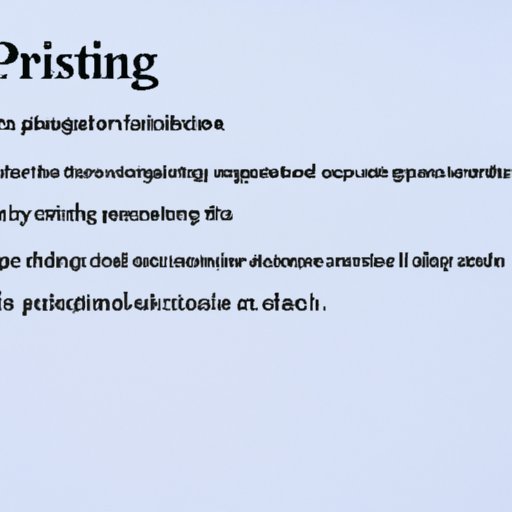
Exploring the Definition of Stance in Writing
Stance is an important concept in writing that refers to the attitude or point of view taken by the author of a given text. It is closely related to tone, which is the overall emotional quality of a piece of writing. While tone often reflects the writer’s feelings or emotions, stance is more focused on the perspective they choose to take on a specific topic or issue.
To better understand what stance means in writing, it is helpful to consider some examples. A writer might adopt a neutral stance when discussing a controversial political issue, expressing their opinion without taking sides. Alternatively, they might take a strong argumentative stance, clearly stating their opinion and backing it up with evidence. On the other hand, a writer might choose to take a persuasive stance, trying to convince readers of their point of view. Finally, a writer might opt for a creative stance, using figurative language and vivid imagery to make their case.

An Overview of Different Types of Writing Stances
When approaching a writing project, it is important to consider the type of stance you want to take. Here is a brief overview of the four main types of writing stances:
Establishing a Neutral Stance
A neutral stance is one in which the writer avoids expressing any opinion on a particular topic or issue. This type of stance is most appropriate when discussing sensitive topics such as religion, politics, or social issues. By taking a neutral stance, the writer is able to present both sides of an argument without taking a definitive position.
Adopting an Argumentative Stance
An argumentative stance is one in which the writer takes a clear and definite position on a particular topic or issue. When taking this stance, the writer must provide evidence and logical reasoning to back up their claims. The goal of an argumentative stance is to persuade readers to accept the writer’s point of view.
Taking a Persuasive Stance
A persuasive stance is one in which the writer attempts to convince readers to accept their point of view. Unlike an argumentative stance, a persuasive stance does not necessarily require evidence or logical reasoning. Instead, the writer relies on emotional appeals and effective use of language to make their case.
Choosing a Creative Stance
A creative stance is one in which the writer uses vivid imagery, figurative language, and other literary devices to express their opinion. This type of stance is often used in creative writing, such as poetry and fiction, as well as in some types of nonfiction writing. A creative stance allows the writer to explore a topic from a unique angle and engage readers in a more creative way.
How to Identify and Utilize Appropriate Writing Stances
When selecting a writing stance, it is important to consider the purpose of your writing piece, the audience of your writing piece, and the context of your writing piece. Here are some tips for identifying and utilizing appropriate writing stances:
Identifying the Purpose of Your Writing Piece
The purpose of your writing piece should be the first factor you consider when selecting a writing stance. Are you writing to inform, to educate, to entertain, or to persuade? Depending on the purpose of your writing piece, you may need to adopt a neutral, argumentative, persuasive, or creative stance.
Considering the Audience of Your Writing Piece
It is also important to consider the audience of your writing piece when selecting a writing stance. Who will be reading your writing? Are they experts in the field or general readers? Different audiences may respond differently to various writing stances, so it is important to select a stance that will resonate with your readers.
Understanding the Context of Your Writing Piece
Finally, it is important to understand the context of your writing piece. Is it meant to be serious or lighthearted? Is it intended to be read in a classroom or in a casual setting? Knowing the context of your writing piece can help you determine which stance will be most effective and engaging for your readers.
Selecting the Most Appropriate Stance
Once you have considered the purpose, audience, and context of your writing piece, you can begin to select an appropriate stance. Consider the type of writing you are doing and the type of response you want to elicit from your readers. Do you want to remain neutral or take a stance on an issue? Do you want to persuade or simply inform? Once you have identified the most appropriate stance, you can begin to craft your argument.
A Guide to Crafting Effective Arguments Through Writing Stances
When crafting an argument through writing, it is important to consider the following elements:
Developing a Strong Thesis Statement
The thesis statement is the foundation of any argumentative essay or paper. It should state the main idea of the paper and provide direction for the rest of the essay. When crafting your thesis statement, be sure to clearly express your opinion and take a definite stance on the issue.
Supporting Your Argument With Evidence
Once you have established your thesis statement, you must provide evidence to support your argument. This could include facts, statistics, quotes, or other forms of evidence. Be sure to cite all sources and provide enough evidence to effectively back up your claims.
Using Logical Reasoning to Back Up Your Claims
When crafting an argument, it is also important to use logical reasoning. This includes making connections between ideas, drawing conclusions, and anticipating counterarguments. Using logical reasoning helps to strengthen your argument and increases its credibility.
Anticipating Counterarguments
When creating an argument, it is important to anticipate and address potential counterarguments. This helps to strengthen your own argument by demonstrating that you have considered opposing viewpoints. Anticipating counterarguments can also make your argument more convincing to readers.

Analyzing the Role of Stance in Persuasive Writing
In persuasive writing, stance is particularly important. An effective persuasive piece requires an engaging stance that draws readers in and encourages them to consider the writer’s point of view. Here are some factors to consider when analyzing the role of stance in persuasive writing:
Understanding the Importance of an Engaging Stance
In persuasive writing, it is essential to take an engaging stance. This means selecting a point of view that is interesting and relevant to your readers. It is also important to consider how your stance will be received by your readers. Taking an engaging stance can help to draw readers in and keep them interested in your argument.
Examining How Voice Affects Persuasion
The voice of a persuasive piece is also important. The writer should choose a voice that resonates with their readers and conveys the desired message. A strong and confident voice can help to make the argument more compelling, while a weak or uncertain voice can weaken the effectiveness of the piece.
Investigating How Language Influences Stance
Finally, it is important to consider how language can influence stance. Certain words and phrases can be used to emphasize a certain point of view or to evoke certain emotions in readers. Choosing the right words can help to make your argument more compelling and effective.

Examining the Benefits of Employing an Engaging Writing Stance
Employing an engaging writing stance has numerous benefits. Here are some of the key benefits of taking an engaging stance in your writing:
Connecting With Readers
Taking an engaging stance can help you connect with your readers in a more meaningful way. By taking a stance that is relevant and interesting to your readers, you are more likely to capture their attention and hold it throughout your piece.
Enhancing Credibility
An engaging stance can also help to enhance the credibility of your argument. When you take a stance that is well-informed and well-reasoned, you demonstrate to your readers that you have done your research and considered all sides of the issue. This can help to increase the credibility of your argument.
Increasing Engagement
Finally, taking an engaging stance can help to increase reader engagement. When readers are interested and invested in your argument, they are more likely to pay attention and consider your point of view. This can lead to more meaningful conversations and a greater impact on your readers.
Understanding the Impact of Stance on a Writing Piece
It is important to understand the impact of stance on a writing piece. Here are some of the ways that stance can affect the success of a writing piece:
Analyzing the Effect of Stance on Tone
The tone of a writing piece is closely tied to the stance taken by the writer. A neutral stance will often result in a more formal tone, while an argumentative, persuasive, or creative stance will result in a more informal and conversational tone. Understanding the effect of stance on tone can help you craft a more effective piece.
Examining How Stance Can Shape the Overall Structure of a Piece
Stance can also influence the structure of a writing piece. For example, a neutral stance may require a more linear structure, while a persuasive stance may necessitate a more circular structure. Understanding how stance can shape the overall structure of a piece can help you create a more effective and engaging writing piece.
Exploring the Influence of Stance on Audience Reception
The stance taken in a writing piece can also affect audience reception. Depending on the stance taken, readers may be more or less likely to agree with the writer’s point of view. Understanding how stance can influence audience reception can help you create a writing piece that resonates with your readers.
Understanding How Stance Can Affect the Success of a Writing Piece
Finally, it is important to understand how stance can affect the success of a writing piece. Taking an engaging stance can help to draw readers in and keep them engaged, while taking an unengaging stance can lead to reader disinterest and confusion. Understanding how stance can affect the success of a writing piece can help you create more effective and successful pieces.
Conclusion
Stance is an important concept in writing that refers to the attitude or point of view taken by the author of a given text. It is closely related to tone, which is the overall emotional quality of a piece of writing. There are four main types of writing stances: a neutral stance, an argumentative stance, a persuasive stance, and a creative stance. When selecting a writing stance, it is important to consider the purpose, audience, and context of your writing piece. Taking an engaging stance can help to draw readers in and keep them interested in your argument. Understanding the impact of stance on a writing piece can help you create more effective and successful pieces.
(Note: Is this article not meeting your expectations? Do you have knowledge or insights to share? Unlock new opportunities and expand your reach by joining our authors team. Click Registration to join us and share your expertise with our readers.)
